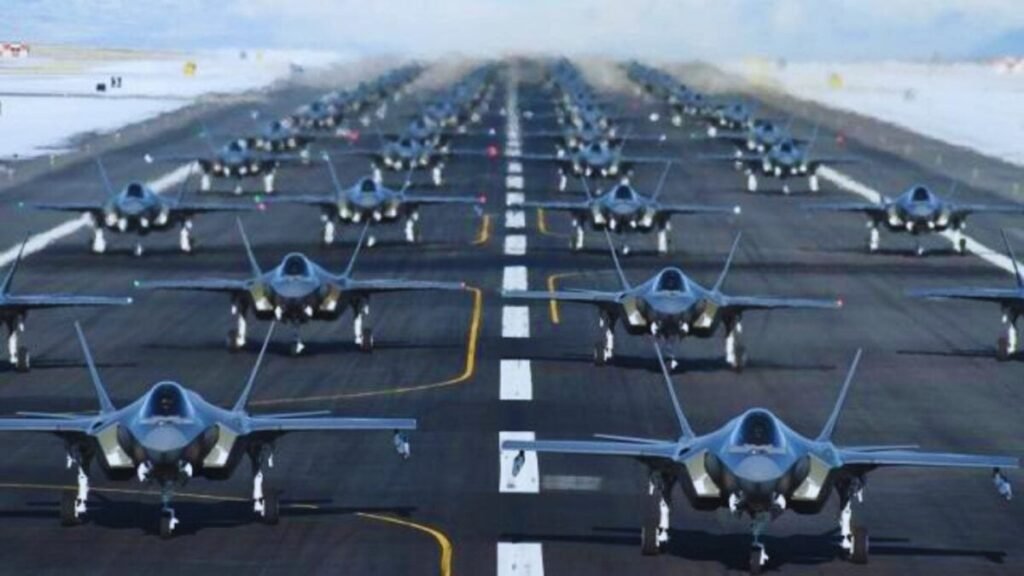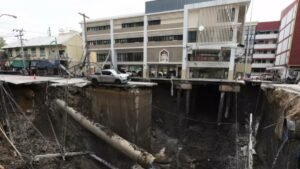At the edge of the world, an invisible army deploys on the ice. A squadron of F-35s has arrived in the Arctic, and it answers neither to Washington nor Moscow.

Geography taught us on school maps. It is a new front of power. Under its apparent stillness, icebreakers, radars, and fifth-generation fighters reconfigure a region where ice is retreating and ambitions are advancing.
Over the past few months, an unexpected movement has altered the balance: a squadron patrols the northern skies, formally inaugurating Denmark’s entry—and by extension, Greenland’s—into the race for polar dominance. It does not answer to Russia, China, or the United States. But, , its arrival marks the beginning of a new era.
A board heating up faster than the planet

has made visible what was once hidden: shorter maritime routes, colossal mineral reserves, and a strategic border connecting three continents. The United States deployed its plan B in Norway. Russia deployed eight atomic icebreakers. China, five more, under the scientific pretext of the “Polar Silk Route.”
Now, with F-35s flying over Nuuk and Denmark and Canada assume that the North is no longer a remote territory, but a central theater where politics, meteorology, and survival intertwine.
In this board, distance and cold are the true adversaries. Cargo ships supplying the bases can take weeks to cross seas plagued by growlers—those iceberg fragments that cut steel like paper. And a single logistical error can mean the collapse of a mission or the isolation of an entire garrison.
The cold war… returns to the cold

is objective: its northern fleet, nuclear submarines, and hypersonic missiles that can cross the Pole make the Arctic its natural stronghold. But after the war in Ukraine, part of that machinery weakened, and the West saw a crack in the ice.
Allies reactivate what was dormant. Canada invests $6 billion in over-the-horizon radars; and Denmark, silent but decisive, allocates over $8 billion to strengthen its fleet of fighters and maritime patrols.
The new headquarters in Nuuk symbolize more than a military investment. It is an attempt to build a permanent presence in a geography that does not forgive mistakes, where winter cuts off communications and fire, literally, is extinguished by the wind.
Greenland: the heart of the new North
. But the Danish reaction proved otherwise: the largest territory in the Arctic is today,
has decided to shield its sovereignty with 43 F-35 fighters, two new polar patrol vessels, and a network of coastal and satellite sensors that will cover from Disko Bay to the northeast routes.
Local leaders, like former Prime Minister Aleqa Hammond, warn that militarization is decided in without listening to the Inuit communities. “The Arctic is not an empty board,” they repeat. And they are right: beneath each radar are villages that live off hunting, fishing, and the frozen land that armies now codify as “strategic infrastructure.”
Behind the fighters, the ice economy
What happens over the Arctic is not sustained by politics alone: it needs industry, shipyards, logistics, and patience. Each base requires supply lines, heated hangars, runways that can withstand temperatures of -40 °C, and systems capable of operating without light for weeks.
is creating a new economic fabric that goes beyond armaments: polar maintenance, transportation, engineering, and communications. The Arctic is no longer just a frontier: it is a market.
The thin white line
. Air accidents, logistical delays, and psychological exhaustion are reminders that war on ice demands a different resilience. Each radar, each runway, and each flight depends on a choreography that the weather can ruin in a matter of hours.
Meanwhile, satellites spy in silence and F-35s circle over a sky that seems eternal. Their flight is not a show of strength, but a statement of intent: the Arctic belongs to whoever can sustain it.
The West has awakened late, but with resources. And in that awakening, the sound of the fighters over the snow marks a change of era: the ice is melting, borders are shifting, and the North—once a symbol of isolation—becomes the new mirror of global power.







